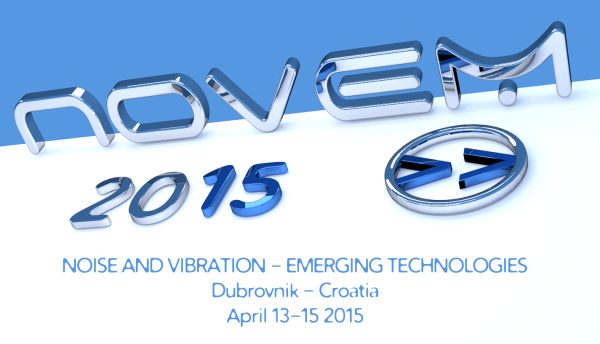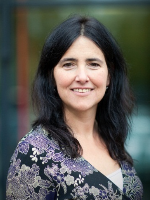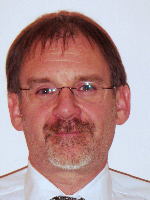
|
|
|
Forum > Forum II: Inverse TechniquesForum II: Inverse Techniques in Vibration and AcousticsChair: Prof. Ines Lopez Arteaga, Royal Institute of Technology, Sweden Prof. Andy Moorhouse, University of Salford, UK
Inverse methods and their application in vibroacoustic measurementsMany measurement approaches in acoustics and vibration rely on inverse methods to obtain unknown inputs or system properties from measured outputs. For example, methods like inverse force synthesis are able to probe inside structures to obtain forces which could never be measured directly. Inverse methods are not without their problems however, and considerable care is required to obtain reliable results from practical measurements. The most common problems encountered are described with reference to the classical frequency domain formulation and approaches to treatment by regularisation are discussed. Potential advantages of a time domain approach are considered and an example of a working approach is presented. Some special techniques that have been developed for extracting useful information from vibro-acoustic systems are then described. First, the in situ blocked force method enables the extraction of information about vibration sources from measurements made in situ on a working installation. The method is illustrated using measurements from real installations including a building-mounted wind turbine and it is shown how the blocked forces extracted are an intrinsic property of the machine and independent of the specific installation. A method for extracting the dynamic stiffness of isolators and other intermediate structures from in situ measurements using an inverse approach is then described. Measurement examples with real isolators are provided. Finally, the ‘round trip identity’ is described, which enables frequency response functions to be obtained at ‘passive locations’, i.e., at locations where excitation cannot be applied for example due to lack of access. The approach is illustrated with example measurements from practical structures and the application of previously described regularisation techniques is discussed.
Prof. Peter Göransson, Royal Institute of Technology, Sweden
Experimental-numerical methods for inverse characterisation of some material properties of anisotropic-anelastic porous materialsOne of the major challenges in accurately modelling poroelastic materials is the characterisation of the parameters required for their modelling. To set up measurements that provide these macroscopic properties, for example those defined in the Biot modelling paradigm, is complicated due to the presence of the (at least) two interacting material phases. To this end, a general method for characterisation of some of the anisotropic properties of open-cell porous materials will be presented. The scheme is based on a general inverse formulation in which the main idea is to isolate a specific physical mechanism in a dedicated measurement set-up that may be modelled by principles only considering the property of interest. Examples discussed are related to the estimation of flow resistivity, modelled through Darcy’s law, describing the flow of a fluid through a poroelastic medium; identification of the elastic moduli in Hooke's law as well as the dynamic, anelastic moduli in the augmented Hooke's law, relating linear stresses and strains in the material for viscoelastic materials. Obviously, the number of parameters involved in the material model must be smaller than the number of independently observed states of the material. These data may be ensured through proper choices of either geometrical arrangements, the induced flow or deformation states or the number of frequency lines included, or a combination of these. The process to obtain the relevant material properties is an inverse, iterative one, in which the physical model is solved for multiple possible sets of parameters until the measured data is accurately fitted. This iterative process is guided by an optimisation tool, which minimises the difference between the predicted and the measured data. The solutions for each iteration are calculated with numerical prediction tools, where it must be ascertained that the numerical errors are kept to a minimal level. Examples of experimental setups will be reviewed together with the corresponding operating conditions. Results obtained for some recently characterised poroelastic materials will be discussed and the implications for their vibroacoustic behaviour will be illustrated. Prof. Jérôme Antoni, National Institute of Applied Science, France
Bayesian vision of inverse problem in acousticsThe inverse problem in acoustics is known to be inherently ill-posed due to several reasons such as the lack of information in the measurements, disturbances and noise, and possible uncertainties in the propagation laws. Contrary to the deterministic approach, a probabilistic formalism is ideally suited to modelling these various sources of errors – be they stochastic or purely epistemic – and to control their effect in the inversion process. In this context, the Bayesian framework is particularly attractive since it expresses the inverse probability (amplitude probability of the source field given the measurements) in terms of the direct problem (amplitude probability of the measurements given the source field) and any information that is a priori available on the source characteristics before the experiment is made (the so-called “prior”). This formalism has several advantages; among other things, a) it contains an implicit mechanism of regularization (of which Tikhonov regularization happens to be a particular case) together with automatic tuning of the regularisation parameters, b) it returns probabilistic results from which confidence intervals can be easily set up, c) it makes possible the propagation of the various sources of errors or uncertainties to the final result. These concepts will be reviewed and some other recent results that the Bayesian approach has made possible in the field of acoustic imaging will be presented. These include the definition of an optimal basis for source reconstruction, a solution to blindly separate sound sources of distinct physical origins, the reconstruction of missing phase relationships between non-synchronous (e.g. sequential) measurements, and the possibility to account for modelling errors. Illustrations will be given on different academic and industrial cases. |
| Online user: 1 | eRSS Feed |

|



.png)
